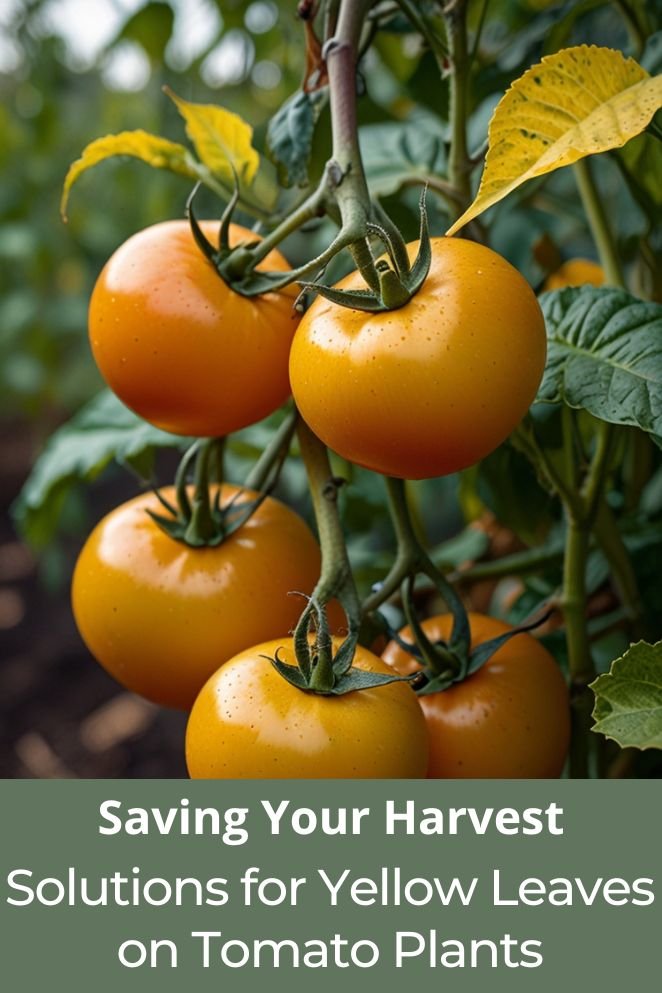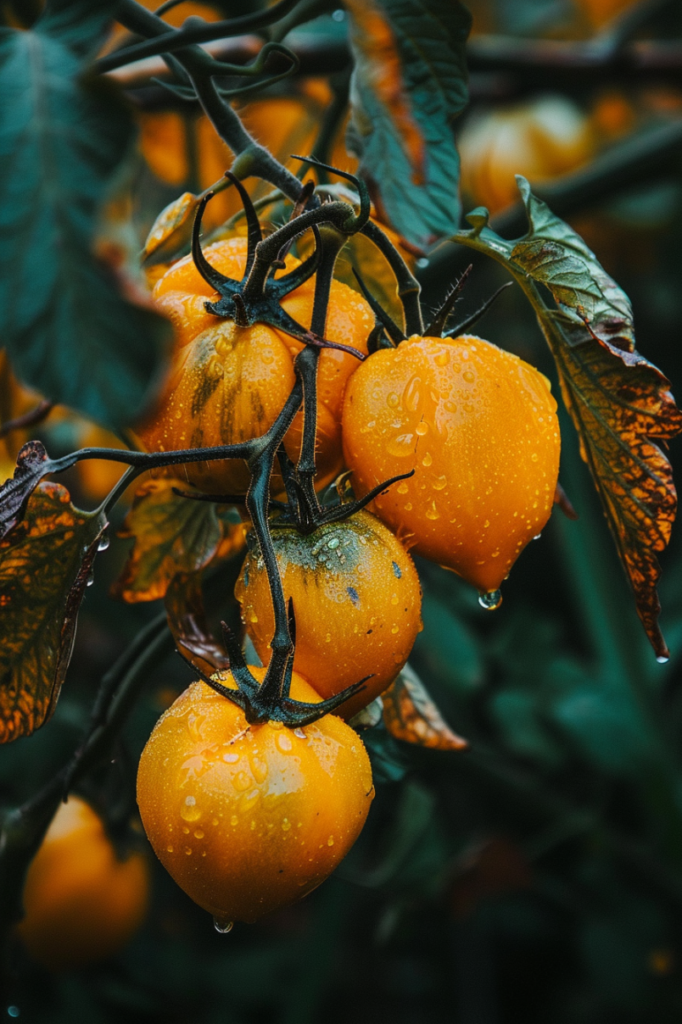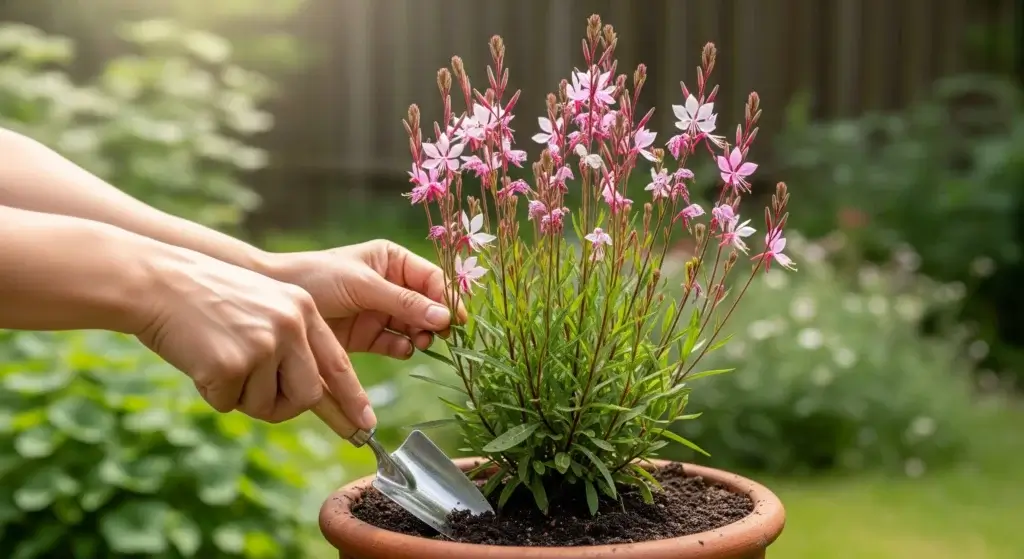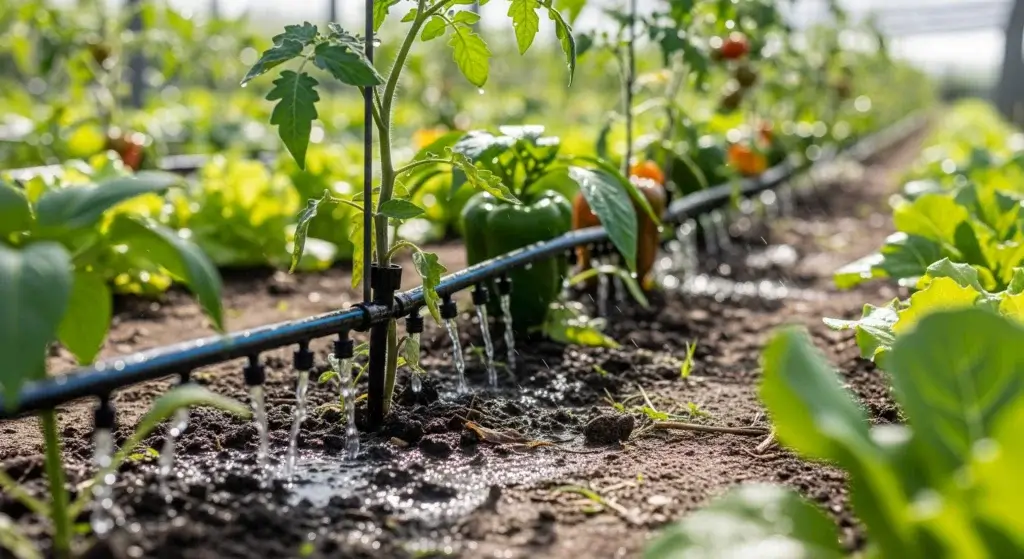
Tomato plants are a staple in many gardens, providing a bountiful harvest of juicy, flavorful fruits.
However, when the leaves of these plants begin to turn yellow, it can be a cause for concern.
Yellow leaves on tomato plants can be a sign of various issues, ranging from nutritional deficiencies to pests and diseases.
In this article, we’ll delve into the world of yellow leaves on tomato plants, exploring the reasons behind this phenomenon and providing solutions to keep your plants healthy and thriving.
Why Are Your Tomato Leaves Turning Yellow?
Yellow leaves on tomato plants can be concerning, but they’re often a sign that something in your plant’s environment needs attention.
Let’s explore some common reasons why your tomato leaves might be turning yellow:
- Read also: Best Companion Planting for Your Tomatoes
- Read also: Troubleshooting Tomato Leaf Problems
Nutrient deficiencies
Just like humans, tomato plants need a balanced diet to thrive.
If they’re not getting enough of essential nutrients like nitrogen, iron, or magnesium, their leaves may start to yellow.
Keep an eye on your plant’s overall health and consider fertilizing with a balanced fertilizer to ensure it’s getting the nutrients it needs.
Overwatering
While tomatoes love water, too much of a good thing can spell trouble.
Overwatering can lead to waterlogged soil and root rot, which in turn can cause leaves to turn yellow.
Be sure to water your tomato plants deeply but infrequently, allowing the soil to dry out slightly between waterings.
Underwatering
On the flip side, underwatering can also cause yellowing leaves as the plant struggles to get enough moisture.
Check the soil regularly and water your plants deeply whenever the top inch or so feels dry to the touch.
Consistent watering is key to keeping your tomato plants happy and healthy.
Pests and diseases
Pests like aphids, whiteflies, or spider mites can wreak havoc on tomato plants by sucking the sap from their leaves, causing them to yellow and wilt.
Additionally, fungal diseases like septoria leaf spot or early blight can also lead to yellowing leaves.
Keep an eye out for signs of pests or diseases and take appropriate measures to control them, such as using insecticidal soap or applying fungicides.
Environmental factors
Sometimes, external factors beyond your control can contribute to yellowing leaves.
Extreme temperatures, high winds, or prolonged exposure to direct sunlight can stress tomato plants and cause their leaves to turn yellow.
Consider providing shade or wind protection for your plants during particularly harsh weather conditions to help them stay healthy.

Solutions for Yellow Tomato Leaves
Dealing with yellow leaves on your tomato plants?
Don’t worry, there are several simple solutions you can try to get your plants back on track:
Adjust your Watering Schedule
Start by checking the moisture level of the soil regularly.
Overwatering can lead to root rot and yellowing leaves, so make sure to water your plants deeply but infrequently.
Allow the top inch or so of soil to dry out between waterings to prevent waterlogged conditions.
Fertilize your plants
Tomato plants need a balanced diet to stay healthy and vibrant.
Consider fertilizing your plants with a balanced fertilizer to provide them with the essential nutrients they need.
You can also use a foliar spray to give your plants an extra boost of nutrients directly through their leaves.
Prune your plants
Remove any yellow or damaged leaves from your tomato plants promptly.
Pruning helps to prevent the spread of disease and encourages healthy growth by redirecting energy to where it’s needed most.
Use clean, sharp pruners to make clean cuts and avoid further stress to your plants.
Use pest control measures
Pests like aphids, whiteflies, or spider mites can contribute to yellowing leaves.
Combat them with organic pest control methods like neem oil or insecticidal soap.
These options are effective at controlling pests while being gentle on your plants and the environment.
Provide support
Give your tomato plants the support they need to thrive by using tomato cages, trellises, or stakes.
Proper support prevents damage from wind or heavy fruit, reducing stress on the plants and helping to maintain healthy foliage.

Tips to Keep Your Tomato Plants Green
Keeping your tomato plants vibrant and green is key to ensuring a bountiful harvest.
Here are some essential tips to help you achieve just that:
Provide adequate light
Tomato plants thrive in sunlight, so make sure they get plenty of it.
Aim for at least 6 hours of direct sunlight per day to keep your plants happy and healthy.
If you’re growing tomatoes indoors, consider placing them near a sunny window or using grow lights to supplement natural light.
Maintain proper temperature
Tomato plants are sensitive to temperature fluctuations, so it’s important to keep them within their comfort zone.
Aim for temperatures between 65°F and 75°F (18°C and 24°C) to promote optimal growth and prevent stress.
If temperatures soar or dip too low, consider providing shade or protection to keep your plants comfortable.
Use mulch
Mulching around the base of your tomato plants offers a range of benefits.
Not only does it help retain moisture in the soil, but it also suppresses weeds and regulates soil temperature.
Choose organic mulch like straw, shredded leaves, or grass clippings, and apply a layer around the base of your plants to keep them happy and hydrated.
Monitor for pests
Pests can wreak havoc on tomato plants if left unchecked, so it’s essential to keep a close eye on your plants for signs of infestation.
Regularly inspect the leaves, stems, and fruit for any unusual markings, holes, or pests themselves.
If you spot any issues, take action promptly using organic pest control methods to prevent further damage.
Keep the soil healthy
Healthy soil is the foundation of healthy plants, so be sure to give your tomato plants the nutrients they need to thrive.
Use compost or well-rotted manure to improve soil structure and fertility, providing your plants with a steady supply of essential nutrients.
Consider testing your soil periodically to ensure it’s balanced and amend it as needed to keep your plants green and vigorous.

- Read also: Save Your Tomatoes: Tips on Blossom End Rot in Tomatoes
- Read also: Causes and Solutions: Troubleshooting Tomato Stem Problems
Conclusion
Yellow leaves on tomato plants can be a sign of various issues, but by understanding the causes and implementing the solutions outlined in this article, you can keep your plants healthy and thriving.
Remember to adjust your watering schedule, fertilize your plants, prune them regularly, and provide support to prevent damage.
By following these tips, you can enjoy a bountiful harvest of juicy, flavorful tomatoes.



